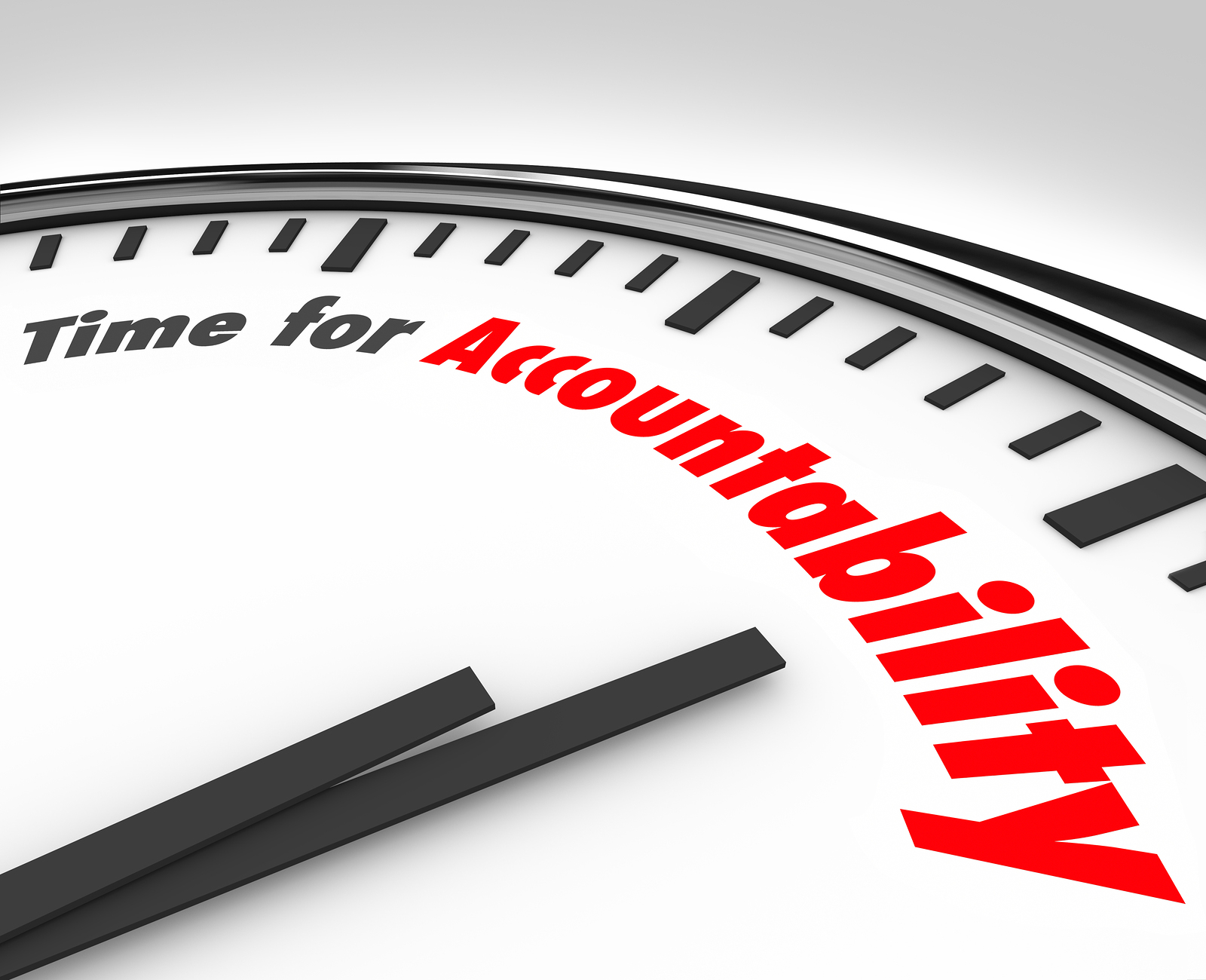
8 Questions to Ask Your Accountability Consultant
Published in AccountabilityAccountability issues have been around since Adam and Eve ate the apple in the Garden of Eden. Adam blamed Eve. Eve blamed the snake.
Blaming others rarely works as a long-term solution. The snake’s reward for his behavior was a lifetime of crawling. Eve’s reward was painful childbirth. Adam’s reward was a lifetime of toil.
My use of the word reward is deliberate. That’s because accountability is a choice. Decisions we choose to make reward us with an outcome.
The characters in the Book of Genesis each made a choice to test the limits of the trust they’d been given. They were told, “You may freely eat of every tree of the garden, but of the tree of knowledge of good and evil you shall not eat.” Despite this covenant, or contract, Adam and Eve made a decision to eat the forbidden fruit, and their individual choices set off a chain reaction of events for which they were rewarded.
Some may view the reward as “punishment.” Others may see the result as the logical outcome of a poor choice made despite a clear set of expectations.
Whatever your view, we’ve been struggling with accountability ever since.
A Fresh Take on Confrontation
My efforts toward becoming an accountability consultant began in 2009-in the depths of the worldwide recession-by interviewing senior leaders at many of the world’s most admired companies, such as The Container Store, Ernst & Young, Herman Miller, Nucor, Sony, Southwest Airlines and Marriott.
I expanded my research by interviewing CEOs and their teams at dozens of high-performing small- and mid-sized companies. And I supported my initial findings from these interviews with data I gathered from more than 5,000 executives worldwide.
“The hardest thing about accountability,” Ernst & Young’s David Alexander told me, “is consistent performance evaluation. If you are inconsistent with how you’re communicating expectations or you’re inconsistent in evaluating performance, then it will tear down the fabric of your culture.”
So when you see material changes in someone’s performance-whether it’s a top performer or an average performer-you will need to determine what’s happening in their life to account for the drop-off in their performance.
You will have to confront the situation.
Just as consequences have come to be viewed as unfavorable (when in fact a consequence can be favorable or unfavorable), the idea of confronting an issue or person has taken on a negative meaning.
The origin of the word confront is two Latin words-con (origi nally com), meaning “together,” and frontem, meaning “forehead.” Confront is a neutral word meaning “to stand in front of.”
So when you confront an issue, you are simply bringing that issue front and center to be addressed.
Confrontation is the search for the truth.
As you begin your search for the truth, reflect first on the clues about this person’s performance you may have missed or disregarded along the way. There might be personal problems, work hindrances, or any other problem that might lead them to cause a drop in their performance. Understandably, confrontation is something that needs to be polite and direct, without any other problems. With remote working now becoming a norm, there might be problems in holding such a confrontation with the staff. However, in order to prevent employees from leaving out of angst (It is called the Great Resignation), you could try and hold a one on one conversation with them over teleconferencing software used by the company.
If you’ve been allocating an hour to monthly one-to-one sessions with your direct reports, you may have picked up on clues. We’re not talking about hallway conversations, staff meetings, or about the latest project they’re leading. This is dedicated one-on-one time.
As an executive coach, I find that even the most successful lead ers appreciate a sounding board, which is true inside your organization as well. Carving out time to meet with your direct reports will save you countless hours and dollars down the road. The form I use as a guideline for these conversations can be downloaded for free.
Clarity Creates Confidence
Communication helps, but it cannot explain away poor perfor mance.
As you think about your next steps with an underperformer, be sure you’re crystal clear on answers to eight essential questions. Once you have achieved clarity, you can be confident you’re making the right decisions.
- What is my role in this? Before you hold others accountable you first must hold yourself accountable. Is it possible you’re enabling the very behavior you don’t want by doing the other person’s work or looking the other way? Were your expectations specific or unclear? Did you make it difficult for some one to come forward and warn you of a problem? Are you avoiding discussing the situation? Are you hoping poor performance will improve by itself? It won’t.
- Does the person know they’re underperforming? If your answer to this question is “no” or “I’m not sure,” see #1 above. It’s unfair and unreasonable to expect performance to improve if the person doesn’t know there’s a problem. We tend to be mad at ourselves for not providing clear expectations and frustrated by our unwillingness to con front the issue. Then we have conversations in our head and not with the underperformer.
- Is the problem a skill or will issue? “Typically, an employee doesn’t want to be a low-performing employee,” Southwest Airlines’ Elizabeth Bryant told me. That means it’s up to the leader to figure out where the breakdown is occurring. If it’s a skill issue, those deficiencies can be addressed. A “will issue” is attitudinal. So if it’s a will issue, “that’s a pretty easy decision to make,” says Bryant, “and most of the time it means moving them out of the organization.”
- Is the person coachable? Conversations about under-performance are coaching sessions to help colleagues improve and to help you get answers to your questions. Ultimately, though, performance is a choice. If a person wants to be treated differently, they must start acting differently. The employee who is unable or unwilling to perform has made a choice and must be prepared to accept the consequences of that decision.
- How much of the organization’s time am I willing to invest? What is this underperformance costing us? Lost time is one obvious cost. So is lost money as measured in mistakes, overtime, lost sales and lost customers. What about the cost to employee morale? And to your reputation as you fail to address the underperformance everyone else sees? How much can your organization afford to lose-money, morale, time, customers, employees, reputation-before the underperformance is turned around?
- How much time am I willing to invest? A deadline is a powerful tool in driving performance. You need to be very clear with yourself about the performance you expect and the amount of your own time you will continue to invest in this person to get performance back on track. Ask yourself: Do I set deadlines or guidelines?
- What’s my plan B? Smart leaders position their organizations for the best chance of achieving desired outcomes despite the circumstances. Think through the scenarios-the internal ripple effect of replacing an underperformer in a key position, customer implications, marketplace reputation-and develop back-up plans in the event the underperformer must be demoted or dismissed.
- How committed am I to executing my plan? Armed with clarity surrounding these essential questions, you will be fortified with confidence to make the right decision about the underperformer. You must hold yourself accountable to take action. Your employees’ reaction to well-deserved promotions and well-deserved firings are the same: What took you so long?
With great responsibility comes great accountability.
How you handle underperformance is a reputation-defining moment for you as a leader.
Answering these eight essential questions about underperformance can help you do what’s best for you and your organization.
Ready to reset?
Attend my free Accountability webinar: I Did It! to set and achieve your 2021 goals.
- February 17th from 11 AM – 12:30 PM Central Time
- My free webinar will help you:
– Sharpen your personal goals
– Improve time management
– Tackle tough work-related issues
– Support remote workers
Learn More
To dive even deeper into the topic of accountability, I invite you to purchase a copy of my bestselling book, “Accountability: The Key to Driving a High-Performance Culture.”
Become a better leader.
Download my three free e-books.
Free Tips
Sign up to receive free tips on business, leadership, and life.
Get My Latest Book
HOW LEADERS DECIDE
History has much to offer today’s current and aspiring leaders.
Business schools teach case studies. Hollywood blockbusters are inspired by true events.
Exceptional leaders are students of history. Decision-making comes with the territory.



